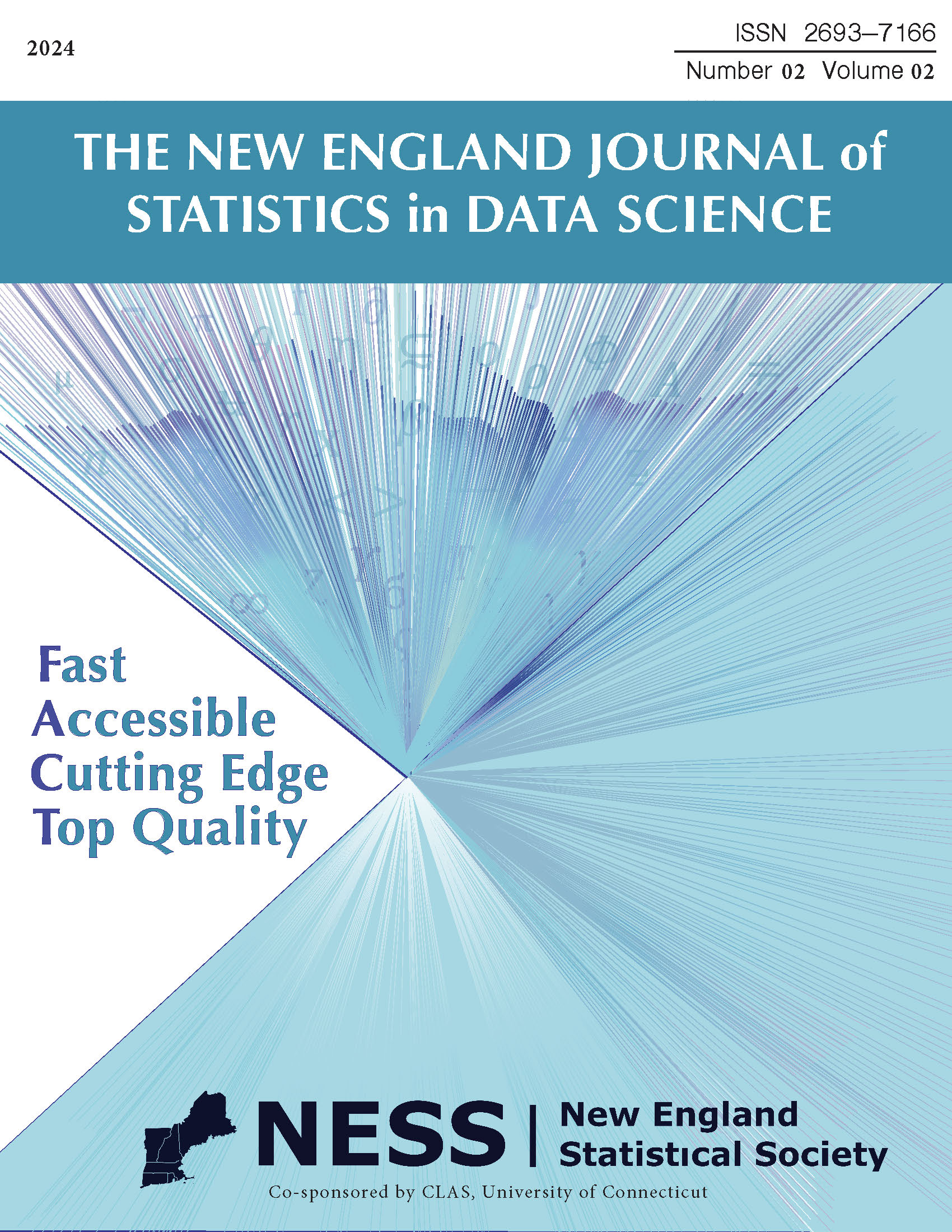Volume 2, Issue 2 (2024), June 2024

Order by:
Pub. online: 12 Jun 2024
Type: Software Tutorial And/or Review
 Open Access
Open Access
Area: Editorial
Journal:
The New England Journal of Statistics in Data Science
Volume 2, Issue 2 (2024), pp. 153–154
Pub. online: 27 Mar 2024
Type: Methodology Article
 Open Access
Open Access
Area: Statistical Methodology
Journal:
The New England Journal of Statistics in Data Science
Volume 2, Issue 2 (2024), pp. 155–174
Abstract
Pub. online: 18 Dec 2023
Type: Methodology Article
 Open Access
Open Access
Area: Statistical Methodology
Journal:
The New England Journal of Statistics in Data Science
Volume 2, Issue 2 (2024), pp. 175–189
Abstract
Pub. online: 29 May 2024
Type: Methodology Article
 Open Access
Open Access
Area: Statistical Methodology
Journal:
The New England Journal of Statistics in Data Science
Volume 2, Issue 2 (2024), pp. 190–214
Abstract
Pub. online: 13 Dec 2023
Type: Methodology Article
 Open Access
Open Access
Area: Statistical Methodology
Journal:
The New England Journal of Statistics in Data Science
Volume 2, Issue 2 (2024), pp. 215–228
Abstract
Pub. online: 1 Dec 2023
Type: Methodology Article
 Open Access
Open Access
Area: Statistical Methodology
Journal:
The New England Journal of Statistics in Data Science
Volume 2, Issue 2 (2024), pp. 229–260
Abstract
Pub. online: 23 Feb 2024
Type: Methodology Article
 Open Access
Open Access
Area: Statistical Methodology
Journal:
The New England Journal of Statistics in Data Science
Volume 2, Issue 2 (2024), pp. 261–270
Abstract